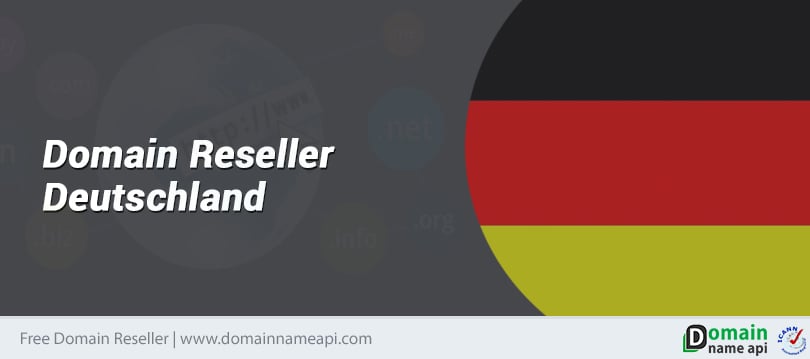
Expand Your Domain Portfolio With Several Newly Promoted Popular Ntlds
 Old TLDs are original domains that are now widely used. Each of them has a specific target and a specific area to which it is connected. Some of the best known are:
Old TLDs are original domains that are now widely used. Each of them has a specific target and a specific area to which it is connected. Some of the best known are:
.com - Usually used for commercial businesses and individuals.
.net - Abbreviation of "Network", these are usually associated with internet providers, e-mails and umbrella sites connecting to various small sites.
.org - Non-profit charities often use the .org domain extension. Associations, Sports clubs and various religions also use this extension.
.edu - “Institutions operating in the field of education” Schools, universities and other education centers use this TLD.
.gov - This extension is a limited TLD used by the USA. Any government site must have a .gov domain extension.
For a long time, such high-level domains were considered sufficient to cover all sub-sections of the Internet. However, as the internet expanded, the need for new TLDs also increased. Studies are ongoing for new generic top level domains (gTLDs). Required for brands that want to maintain a strong online presence with 1,200 gTLD and more recently authorized.
There is a striking interesting trend in this area: the number of brands that register gTLDs is for defensive ones, not for introducing anything new.
Defense records must be logical. To give an example; The “lousy” gTLD, which was released in 2015 and is a concern for brands that are intended for use by third parties for trolling or harmful purposes. Many major brands were quick to register their sucks domain before anyone else, but generally there was no intention of actually using the domain or redirecting users to the main website. Instead, domains were too simple to prevent third parties from falling into the hands.
The most effective approach surrounding gTLD records is the clear warning, it can be extremely costly for any business. Sunrise, registration fees, special program fees, and custom name fees can be collected quickly for many organizations and can be cost prohibitive. Secondly, brands may be missing valuable opportunities to use new gTLDs in productive ways.
Although some gTLDs have more obvious uses, other geo-specific, niche-market-specific gTLDSs are exciting and can challenge the idea of what a domain name can be used for. This may be the most exciting opportunity for marketers to show their value for a long time.
Even if various brands insist on registering gTLDs over and over again, they should at least make sure that each domain redirects to live content or to their main site. While this means that traffic to these gTLDs is not wasted, visit traffic can result in higher revenue conversion rates.
The value of defense records depends on your brand's finances and resources. If you can pay registration fees for every promotion of a gTLD, there is no harm in using a defensive approach when taking advantage of the increase in directed traffic. Alternatively, some brands prefer not to register any gTLD to quickly distinguish them from counterfeiting third parties. This ignores all opportunities that come with gTLDs and can lead to an increase in domain recovery costs.
We recommend that all brands look at their gTLD portfolio and consider whether their current approach is cost effective or whether it is better to use them in a productive way to distinguish themselves from their competitors. Also, if your brand has a history of spending a lot of money on purchasing domains from third parties to strengthen its online presence, you should ask whether proactive defense records will save you more money in the long run.
gTLDs are more than just domains. Each is an opportunity to separate your brand from the rest of the package, so each brand should think twice before adopting a defensive approach.
• The Challenges of the New TLD
ICANN, the worldwide regulator of naming on the Internet, opened the Web by allowing the creation of the new TLD.
• An Ambitious Program
The new program aims to create several major TLDs:
• Open TLD:
* TLD will make non-Latin characters (Arabic, Chinese, Hebrew, Sanskrit, Thai, etc.) possible to “localize” the use of the Internet by communities other than English.
* Geographic TLD (.ankara, .bzh, etc.) connected to a place, a city or region will be meaningful for those who want to claim their links to that place or search for content related to it.
* TLD is reserved for a specific community (poor, etc.)
* Specifying the expertise of a website based on generic terms Sectoral TLD (.hotel, .sevgi, .Radyo, .music, etc.)
* TLD is used for a specific target: such as .bank and .finance.
• Closed TLD:
As in a company that registers its name and separates its use for internal purposes (different organizations or subsidiaries of a group). TLD projects with non-Latin characters were prioritized. Other requests are based on random drawing by the party performed by ICANN. For example, the first European TLD due to lottery draw should appear on the web within a few months.
• High Value Added Domains
The purpose of the new TLD is to generate value. In doing so, buyers (businesses, communities, etc.) invest in a system that transfers some of the Internet management to them. The expected offset has more visibility on the Internet, meaning it can be more easily identified by users. Such TLDs attract great attention. An increasing number of Internet users realize the importance of domains.
• Focus on GTLD Market
A "saturated" market
TLD helps an enterprise achieve its goals. He has communication firepower at hand with an appropriate address, both short and original. However, a TLD like .com has fallen victim to its success and is no longer as attractive for investors as it has been in the past. Given the abundance of available domains, creating a short unique address with .com TLD has become extremely difficult. Moreover, the growth rate of .com is decreasing.
The growth and success of a TLD depends on the used business strategy. For example, after a high growth period in 2011 with an aggressive commercial policy, .info lost points in 2012 because some of the domain names were not renewed by their owners.
• Opportunities in the Secondary Market
Business owners looking for domains related to their own business can always turn to the secondary market for the sale of existing domains. Prices may be high in the secondary market.
The websites of expert brokers refer to the domain names offered for sale and publish the records of the latest names sold. We can easily understand the excitement caused by the arrival of the new TLD. There are more options with them. Better still, it shows opportunities to give more meaning to existing domains.
• The Challenges of the New TLD
The emergence of new domains with the new TLD will bring life to the market. New TLD owners are required to introduce them to help users recognize and use them. An effective communication campaign is required for TLD to be known and remembered by the public. The purpose of this; is to make the websites easily identifiable without questioning the search engines, which usually show a list of sites that compete with each other.
• Three Main Scenarios:
• Internet users get the name of the new TLD, and as a result, their online browsing usage changes greatly.
• Users do not change their behavior due to multiple domains. The TLD used is stronger, because users remain with what they know.
• The new TLD creates as much confusion in the minds of Internet users as they give up domain names to improve content searches through major search engines.
In any case, the strategies adopted by the major search engines in relation to the new TLD will be crucial to the commercial success or failure of projects "introduced" or "punished" by algorithms.
• Deployment of the Program
The program opened in 2012 included the vast majority of English projects. Domains created using the new TLD should appear at the end of 2013 after a calendar with important milestones.
Most of the projects are supported by customers in North America and Europe. The two continents of the Western world focus on 83% of their files, followed by Asia and the Pacific (16%). Africa and Latin America have 1% of the projects respectively.
Some new TLDs that can help you specify your web address include:
.tech - Having a .tech TLD with increasing technology start-up, you can set your website out of the package.
.design - Color an artist portfolio page with a .design URL. Or use this new TLD for interior designers, web designer, graphic designer and many more design professions.
.luxury - Fashion brands, high-end accessories, car companies, furniture, these are all services that can be successful under the .luxury domain extension.
.restaurant- This TLD can distinguish your restaurant from all other .com restaurants. It ensures that your restaurant's name exists as a domain name and leaves the “description” for the domain extension.
These are just a few of the countless TLDs available on www.atakdomain.com. Each has its own area of value. The main thing is to find the right thing in everything we do.




